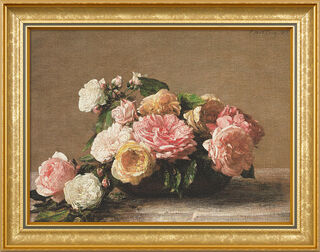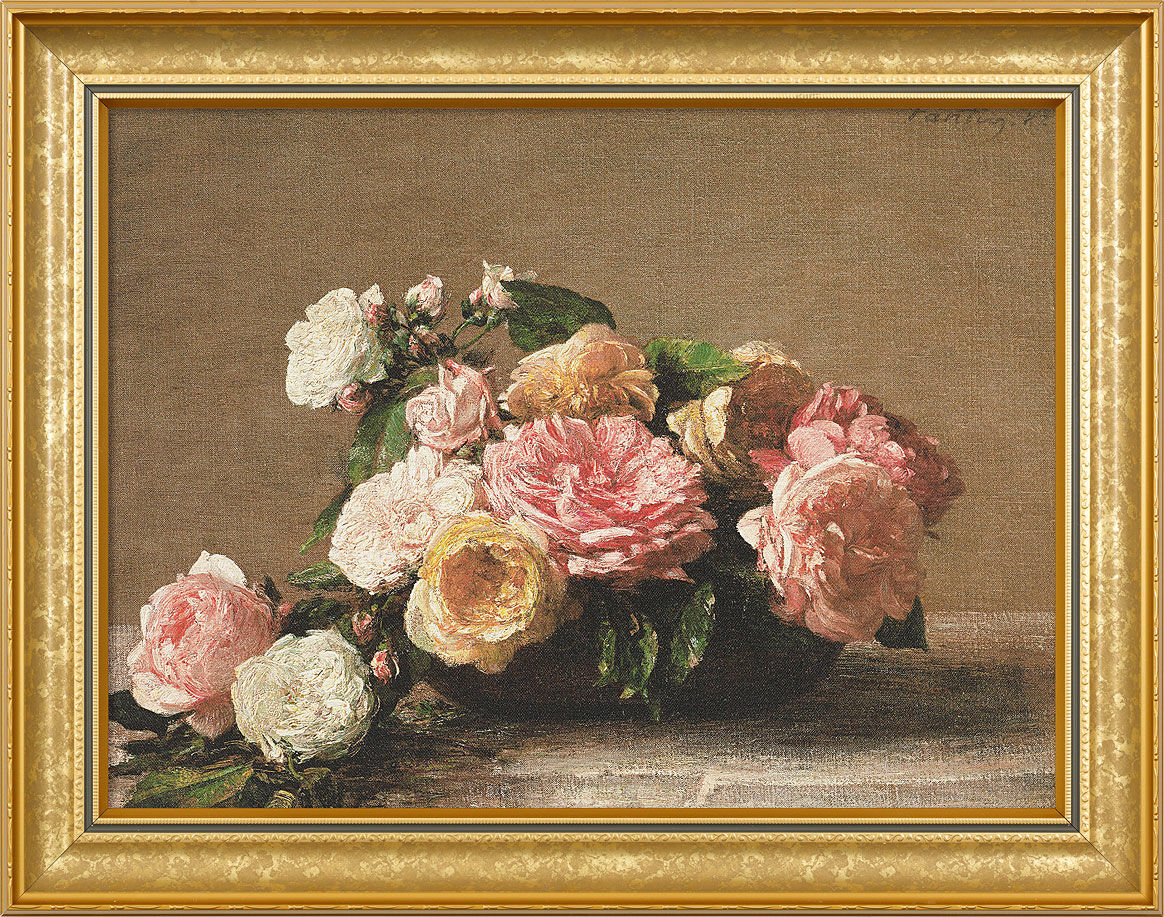Picture "Roses dans une coupe - Roses in the Bowl" (1882), framed


Picture "Roses dans une coupe - Roses in the Bowl" (1882), framed
Quick info
limited, 499 copies | numbered certificate | reproduction, Giclée print on canvas | on stretcher frame | framed | size 55.4 x 69.5 cm (h/w)
Detailed description
Picture "Roses dans une coupe - Roses in the Bowl" (1882), framed
Original: 1882, oil on canvas. Musée d'Orsay, Paris.
Reproduced using the Fine Art Giclée process directly onto artist's canvas for a brilliant, authentic reproduction and mounted on a wooden stretcher frame like an original oil painting. Limited edition of 499 copies. The golden framing underlines the exclusive appearance. With numbered certificate of limitation on the back. Size 55.4 x 69.5 cm (h/w).
Customer reviews
Das Bild erfreut mich täglich.
Das Bild entspricht unseren Vorstellungen und ziert unser Wohnzimmer. Nur der Rahmen hätte etwas dezenter ausfallen können. Bei kräftigem Licht oder Sonneneinstrahlung nimmt die kräftige Vergoldung des Rahmens dem Bild etwas von seiner eigentlichen Ausdruckskraft.
Das Bild hängt bei mir, und es sieht so aus wie erwartwt, sehr schön!
Das Bild ist wunderschön. Die Lieferung erfolgte problemlos.Ich würde Ihnen gerne die Note 1 geben.
About Henri Fantin-Latour
1836-1904
When modernism emerged Henri Fantin-Latour lived in the epicentre – Paris. He was friends with many of the writers and painters who were to revolutionise art. But although he had regular contact with the Impressionists such as Manet, Degas and Whistler, he stuck to his painting style, which was trained by Gustave Courbet and committed to realism.
He became famous for his still lifes, which he produced with almost photographic precision. Those still lifes were also highly appreciated by his fellow painters who pursued completely different ideas and approaches. In addition, there is a series of group portraits in which he depicted his illustrious circle of friends – above all the "Homage to Delacroix" from 1865 (which shows the late painter surrounded by Whistler, Manet, Baudelaire and Fantin-Latour himself, among others) and the "A Studio at Les Batignolles" from 1870, which portrays Manet and his companions (including Zola, Monet and Renoir).
His lithographs, which were inspired by the music of his time, were also highly influential. In art history today, they are regarded as bridging the gap between realism and later symbolism.
Giclée = derived from the French verb gicler "to squirt, spurt".
The giclée method is a digital printing process. It is a high-resolution, large-format printout on an inkjet printer with special different-coloured dye- or pigment-based inks (usually six to twelve). The colours are fade-proof, i.e. resistant to harmful UV light. They have a high richness of nuance, contrast and saturation.
The giclée process is suitable for art canvases, handmade and watercolour paper as well as for silk.
The 19th-century trend of painting originated in France. Gustave Courbet was regarded as the initiator of the realist movement.
In Germany, Wilhelm Leibl and Hans Thoma, among others, were very enthusiastic about this style, which dealt with reality in a realistic way. In the 20th century, there were always realistic tendencies, such as Nouveau Réalisme with artists like Arman and Jean Tinguely and the movement New Objectivity. New forms of realism emerged in the 1960s.
American realism was founded by a group of eight painters of the Ashcan School. They were later joined by Edward Hopper, who became famous for his typically American motifs, depictions of people in architectural or landscape settings in static, actionless situations.


